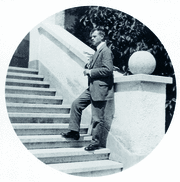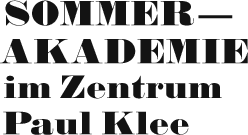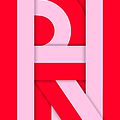
"I want to read people", Hermann Rorschach proclaimed almost 100 years ago. As son of a Swiss art teacher, he drew and painted wondrously, albeit became a father of psycho-diagnostics, a method of psychiatry based on perception. The marriage of art and science in Rorschach's case turned out to be a pretty extraordinary affair resulting in multiple schools, controversies, methods, career and life choices deriving from the same source: ten inkblot drawings that Hermann Rorschach left without a fully developed theory behind it. What was meant to unravel a character of a person subsequently turned into a character of its own, a synonym of ambivalence and undefinability. Not every artwork fares this far. The entire set of inkblots rests at Hermann Rorschach archive in Bern now.
According to science historian Peter Galison, Rorschach's method reinforced modern thought, treating the world as a screen on which people project things like a slide projector projects recognizable images on the wall. In fact through its application the psycho-diagnostics test created its subject as any systematically applied test would do. The so-called unfinished frames that one ought to complete with perceptions and associations marked both advertising and poetry. These blanks are occasionally called a space for imagination. On a more basic level ideas of rational coherency, systemic management and hyper-visualization run our social conduct. Whether you like it or not, filling the blanks or ticking boxes is a daily routine for most of us.
While psychology is being replaced by neuro-management and hybrid-sciences open up further uknowns, new theories and new characters emerge. The latter include even retail window mannequins - they come in three styles nowadays: realist, abstract and headless. More questions follow: what about reformulating the inkblot as a portrait of the world rather than a portrait of a person? How does art contribute to psycho-therapeutic project in neuro-management era? Does headless mean our brain capacities are distributed outside of our bodies? What is the power of languages to produce their own consequences through making new words, neologisms and combinations that belong to many orders at once? Could it facilitate developing new ways of sensing the world?
It is also rather evident these days that we act not only as readers of people, but also as writers of ourselves and others. Cultivating one's sociability is a daily aesthetic and cognitive practice. Which larger-than-social frameworks shall we inscribe ourselves in when so many are around?






